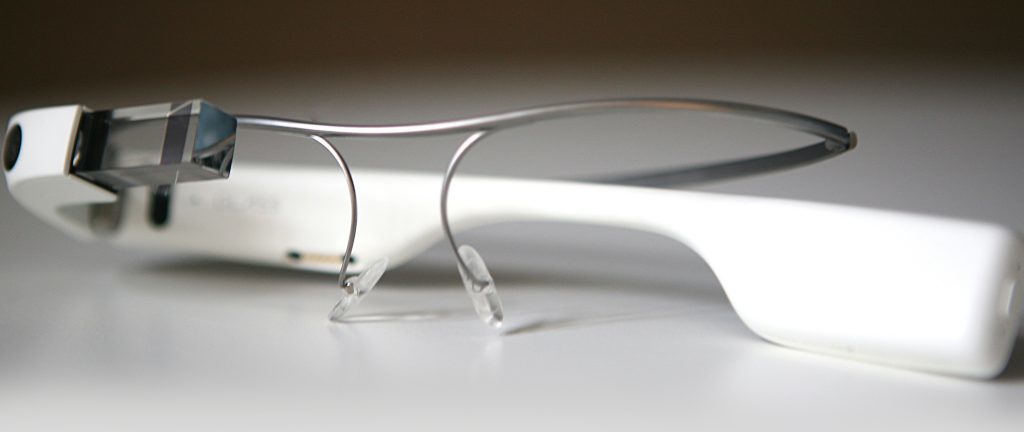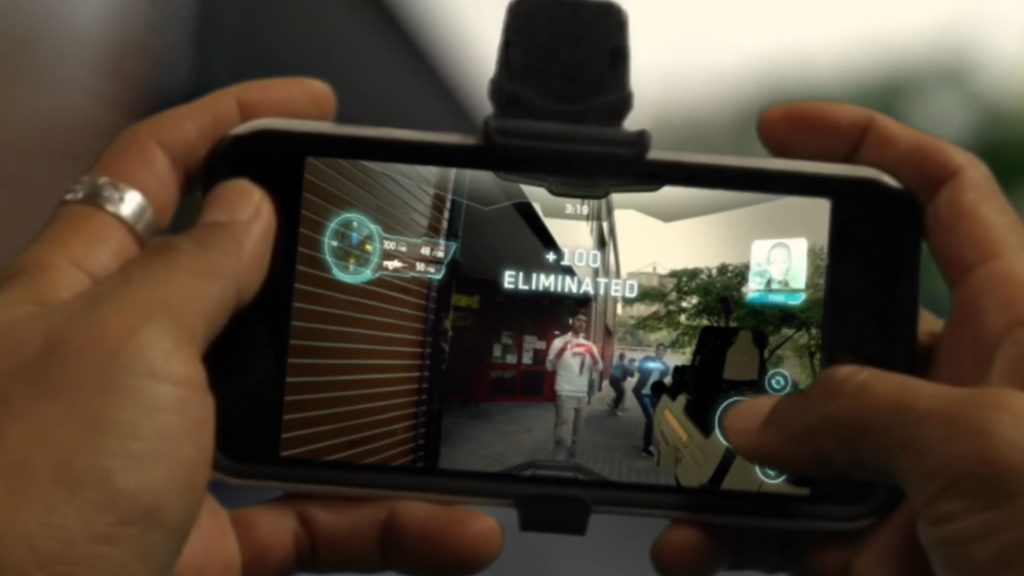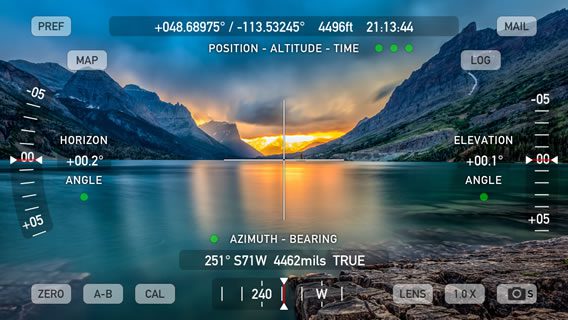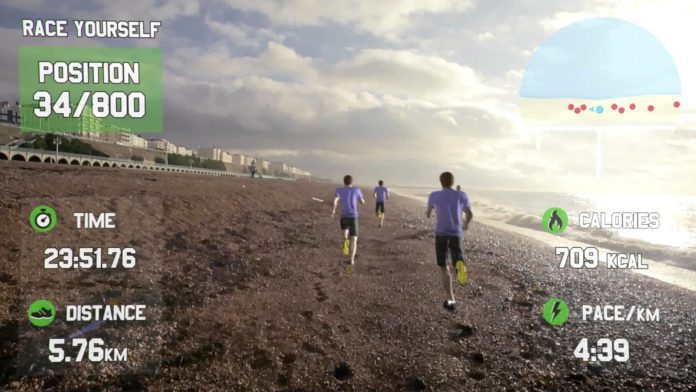AR Mainstream Popularity
In recent years augmented reality has been popularized by the influential Pokemon GO game. The fun app had users walking around neighborhoods the world over, looking for Pokemon and setting world records.
An AR app like Snapchat is popular among regular folks, social media influencers, and even celebrities. Snapchat’s app, creative filters (like the garland and dog ear filters), and short video clip shelf life are so popular that the company developed Spectacles by Snap sunglasses to put the AR experience in your face and on your social media wall.
AR is notably different from VR, as AR-enabled games and apps use a smartphone, tablet, or glasses instead of a headset linked to a computer. With AR, you’ll see projected moving images onto the existing backdrop of the real world, wherever you are.
Hands-Free Solutions

Carrying a cell phone or a tablet as you exercise can be a handful. Freeing a user’s hands for better stabilization and support during exercise can improve their body’s movements and positioning, leading to safer workouts.
Attempts at creating a hands-free solution for augmented reality are seen in the development of Google Glass Enterprise, Microsoft Hololens, and the rumored creation of Apple AR Glasses.
Android vs. Apple
Currently, there are Android and Apple iOS smartphones and tablets that are compatible with AR apps. These phones and tablets run off of a system’s camera sensors, internal system, and GPS for you to play and experience AR games and programs.

Google Tango, was released in January 2016 following a collaboration with Lenovo. The evolving nature of Tango will enable android cellphones with room reading software that uses spatial recognition to create a visual map of any room and surface. Google Tango uses that 3D mapping to project realistic holographic images and videos for you to interact with, creating an impressive AR experience. The only downside is that Android’s don’t yet have facial expression recognition, and you’ll have to be equipped with the right hardware to run the programs.

Apple’s ARKit for iOS 11, which was released on September 19th, is following Google’s lead. Using GPS and 3D spatial tracking in AR games and apps is nothing new. The only difference between Google and Apple’s AR development is that Apple has facial expression recognition and their update will be live for anyone already equipped with the required phone needed for the iOS11 update.
Fitness Training and Augmented Reality
Tech-inspired companies like New Zealand’s ARX provide personal fitness training to clients while using AR glasses to blend the task of exercising with the fun experience of a video game. They have 3 games out: Jump Squat Shooter and Press Up Shooter to target the upper and lower body, and Runner to give a cardio workout as well.
The best part of getting an AR workout is that the user gets to see the trainer at the same time that they’re doing jump squats and throwing virtual fruit, keeping the communication and support between the client and trainer flowing. Because the entire ARX workout program is digital, the apps you connect it to are as well.
Capturing real-time data in AR compatible apps like Strava will track your heartbeat, distance traveled, and the duration of your exercise or run times. With programs like Strava, you’ll have access to a three-dimensional map after completion of a run or cycling session. This can help people reach personal fitness goals and can even help professional athletes shave off time in competition.
Games and Apps for Fitness
Whether you use a cell phone, tablet, or glasses to use AR apps, you’ll be getting a workout. Get motivated to complete objectives and meet fitness goals as you immerse yourself in a virtual world that takes place in the real one.
Whether you’re a hardcore hiker looking to improve how far or how high you can go, or you’re a casual walker looking for the motivation to run while being chased by AR zombies. Anyone can find an augmented reality game that will motivate them to exercise and have fun doing it.
Walk, Run, and Play

- Ingress is a story based AR game that has you use already existing landmarks as a way to unravel the story of the Enlightened versus the Resistance. Great for motivation as you walk or run from location to location in order to join other players in a game of control over buildings and landmarks.
- Zombies, Run! Is a motivating zombie AR game that will make you run away from waves of zombies as you collect items to gain experience. There are seasons of zombie stories, so you won’t hear the same story twice.

Credit to: Father.io - Father.io turns the real world into an MMO first-person shooter AR game that uses the idea of laser tag in gameplay. You’ll need a mobile attachment to play and compete against other players using your smartphone, or take a team approach and take out other groups.
Go on an Adventure

- Theodolite enables users to hike and track altitude, distance traveled, horizon location, and to see where you are in the world using GPS tracking. Your phone and the AR overlay will give all the data any hiking or outdoor sports enthusiast could ask for.
- Star Walk will give you an adventure in your pocket. Made for constellation tracking, this AR app will accompany you on your evening or daytime walk, jog, or hike. Simply go for a run, take out your phone, and view celestial bodies of the past, present, and future.
AR Will Change The Fitness Industry
As more people embrace the usefulness of AR in imaginative and fun ways, the more people are seeing its benefits towards health and exercise. Fitness trainers and exercise instructors will find that recording themselves and their specialized workouts as holograms will be a great tool in reaching more people.
This is especially helpful for busy people who travel frequently for work or for people with wanderlust. Advancements in AR technology will be especially meaningful to people who can’t leave their room, home, or chair due to illness and impairment, or for people who live in remote areas of the world where gyms aren’t accessible.











